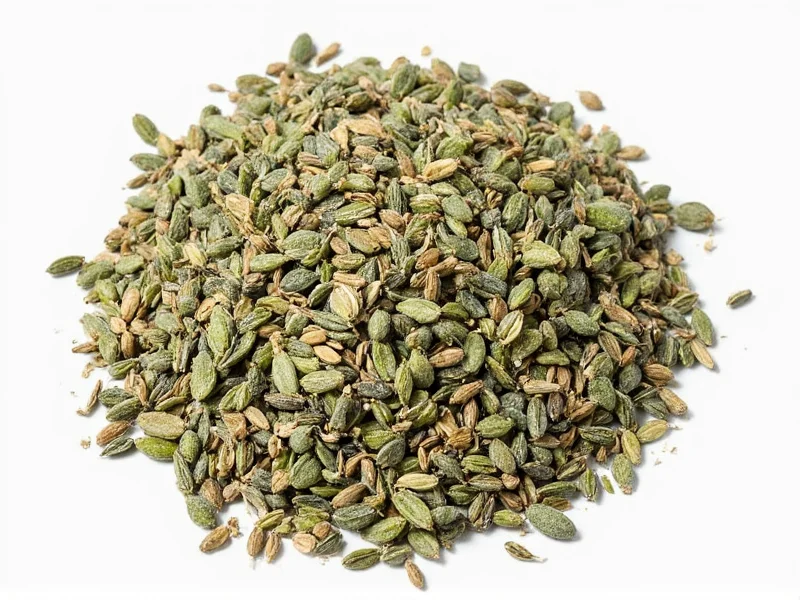Understanding the distinction between dried sage versus ground sage matters significantly in culinary applications. Both forms originate from the same herb—Salvia officinalis—but their physical properties create different impacts on flavor distribution, potency, and dish texture. This comprehensive comparison helps home cooks and professional chefs make informed decisions when selecting between these two common sage preparations.
Physical and Flavor Profile Differences
Dried sage maintains the leaf structure in whole or broken pieces, preserving more of the herb's natural essential oils in their original distribution. This form delivers a more complex, nuanced flavor with subtle earthy, pine-like notes and a gentle peppery finish. The visible leaf fragments provide textural interest in dishes like stuffing or bean salads.
Ground sage, by contrast, releases all essential oils uniformly due to the pulverization process. This creates a more intense, immediate flavor impact with slightly less complexity but greater consistency throughout a dish. The fine powder integrates seamlessly into mixtures without creating concentrated flavor pockets.
| Characteristic | Dried Sage Leaves | Ground Sage |
|---|---|---|
| Texture | Crumbly leaf fragments | Fine, uniform powder |
| Flavor Intensity | Moderate (1x) | High (3x more concentrated) |
| Aroma Release | Gradual during cooking | Immediate upon contact |
| Visual Impact | Visible green specks | No visible particles |
| Best Added | Early in cooking process | Late in cooking or in dry mixes |
Culinary Applications Comparison
Dried sage leaves excel in recipes where you want distinct herb pieces and gradual flavor release. Traditional applications include:
- Thanksgiving stuffing and dressing recipes
- Bean and lentil soups where texture adds interest
- Pasta dishes like sage butter sauce
- Meat rubs where visible herb specks enhance presentation
- Infusing oils and vinegars (whole leaves work best)
Ground sage shines in applications requiring uniform flavor distribution without texture:
- Dry spice rubs for meats and vegetables
- Baked goods like savory biscuits and breads
- Sauces and gravies where smooth texture matters
- Marinades that need quick flavor integration
- Seasoning blends like poultry seasoning
Substitution Guidelines and Conversion Ratios
Understanding dried sage to ground sage conversion prevents flavor imbalances in recipes. Due to increased surface area and concentrated oils, ground sage delivers approximately three times the flavor impact of dried leaves.
When substituting dried sage for ground sage: use 1 tablespoon of dried sage leaves for every 1 teaspoon of ground sage called for in a recipe. For the reverse substitution (ground for dried): use 1 teaspoon of ground sage for every 1 tablespoon of dried sage.
Always add ground sage later in the cooking process than dried sage to prevent flavor degradation from prolonged heat exposure. For best results when substituting, taste and adjust seasoning incrementally—especially with ground sage, which can quickly dominate a dish.
Storage and Shelf Life Considerations
Both forms require proper storage to maintain flavor, but their physical differences affect longevity. Dried sage leaves retain freshness longer due to less exposed surface area. Store in airtight containers away from light and heat.
Dried sage leaves maintain optimal flavor for 1-2 years when properly stored, gradually losing potency but rarely becoming unpleasant. Ground sage typically retains peak quality for 6-12 months before the increased surface area causes faster essential oil evaporation and potential flavor degradation.
Check freshness by aroma: vibrant dried sage should have a strong, pleasant herbal scent with pine and pepper notes. Ground sage loses its vibrant green color over time, turning dull brownish-green when past peak freshness. Never use sage that smells musty, dusty, or lacks distinctive aroma.
Common Culinary Mistakes to Avoid
Cooks frequently make these errors when using dried versus ground sage:
- Overusing ground sage—its concentrated nature means small amounts create significant flavor impact
- Adding ground sage too early—delicate essential oils degrade with prolonged cooking
- Substituting without conversion—using equal volumes creates imbalanced dishes
- Storing in transparent containers—light accelerates flavor degradation in both forms
- Using old sage—degraded sage lacks flavor complexity and may impart bitter notes
For optimal results with dried sage leaves, crush them between your palms before adding to release essential oils. When using ground sage in dry rubs, mix with other spices first to ensure even distribution. In sauces and soups, add ground sage during the last 5-10 minutes of cooking to preserve its delicate flavor profile.











 浙公网安备
33010002000092号
浙公网安备
33010002000092号 浙B2-20120091-4
浙B2-20120091-4